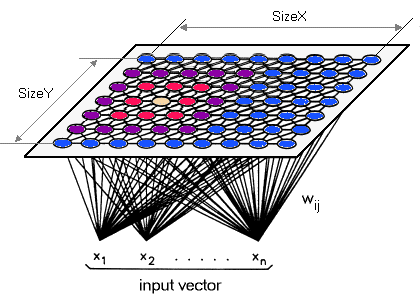 You are working with the text-only light edition of "H.Lohninger: Teach/Me Data Analysis, Springer-Verlag, Berlin-New York-Tokyo, 1999. ISBN 3-540-14743-8". Click here for further information.
You are working with the text-only light edition of "H.Lohninger: Teach/Me Data Analysis, Springer-Verlag, Berlin-New York-Tokyo, 1999. ISBN 3-540-14743-8". Click here for further information.
 You are working with the text-only light edition of "H.Lohninger: Teach/Me Data Analysis, Springer-Verlag, Berlin-New York-Tokyo, 1999. ISBN 3-540-14743-8". Click here for further information. You are working with the text-only light edition of "H.Lohninger: Teach/Me Data Analysis, Springer-Verlag, Berlin-New York-Tokyo, 1999. ISBN 3-540-14743-8". Click here for further information.
|
Table of Contents  Multivariate Data Multivariate Data  Modeling Modeling  Classification and Discrimination Classification and Discrimination  Self Organizing Maps Self Organizing Maps |
|
| See also: ANN - Introduction |   |
The Kohonen network (or "self-organizing map" or SOM, for short) has been developed by Teuvo Kohonen. The basic idea behind the Kohonen network is to set up a structure of interconnected processing units ("neurons") which compete for the signal. While the structure of the map may be quite arbitrary, most implementations support only rectangular and linear maps.

Each node of the map is defined by a vector wij which is
adjusted during the training. The basic training algorithm is quite simple:
Kohonen maps may be arranged in any neighborhood relationship. A simple
but interesting application is the usage of Kohonen maps to solve the travelling
salesman problem. Start the ![]() to see how it works. You can also go to the
to see how it works. You can also go to the  to perform some further experiments with Kohonen networks.
to perform some further experiments with Kohonen networks.
Last Update: 2006-Jšn-17